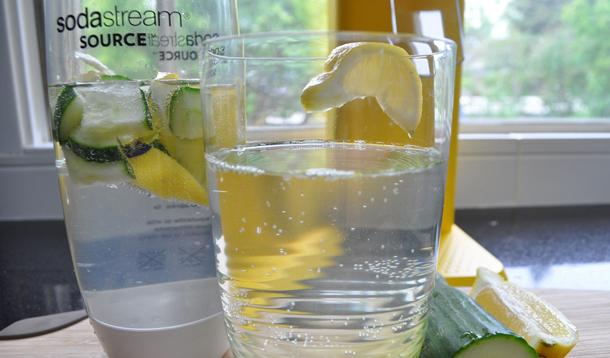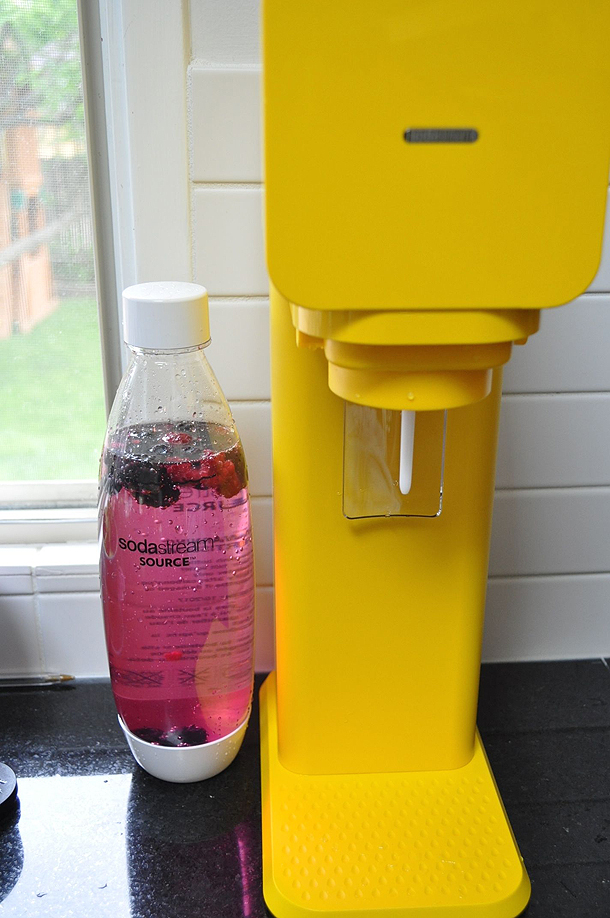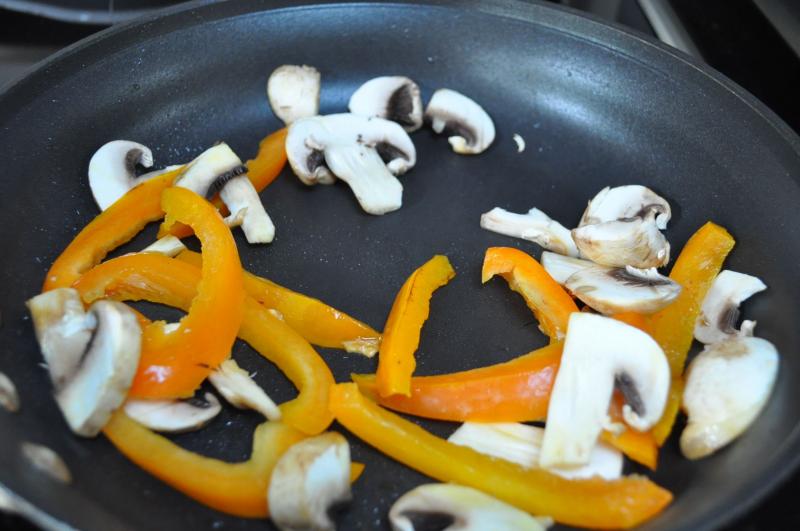
Nutrition labels in Canada may be changing, according to an announcement made on Friday by Canada's Minister of Health, in an effort to make reading food labels (ingredients lists and nutrition facts tables) easier for Canadians and encourage them to make healthier food choices.
The proposed changes include:
The CEO of Dietitians of Canada, Marsha Sharp, has said that she will be engaging dietitians across the country to help develop a response to the proposed changes. As well, all Canadians are able to weigh in on the proposed regulatory changes to nutrition labels (which have been published in the Canada Gazette, Part 1 ) for a 75-day period which will end on August 26th, 2015.
Although these proposed changes are a step in the right direction, (Canadian food labels are very confusing and out of date right now) many Canadian Dietitians, like me, feel that they may fall short. While some of the proposed changes are very positive, such as the change to make all serving sizes standardized across products, and labelling food colours with their proper name, some are lacking. Not distinguishing between natural sugars such as those in milk and fruit, and added sugars such as cane sugar, high fructose corn syrup and molasses in the percentage daily value--and instead, lumping all sugars in together--will make it confusing for consumers to know just how much added sugar is in the product that they're eating. Therefore, products containing real whole fruit or milk (which contain naturally occurring sugar but also a whole host of other nutrients that are important for health), may have similar percentage daily values of sugar as, let's say, sugary cereal or a sugary granola bar (where the sugar is coming from added sugar sources). We want Canadians to limit added sugars in their diet, not avoid fruits, vegetables and milk products because of their naturally occurring sugars.
The proposed changes would also make the daily value of total sugar (the recommended amount that Canadians consume per day), 100 grams (25 teaspoons) of sugar. By contrast, the WHO (World Health Organization) has recently recommended a daily limit of 50 grams of added sugar per day, which many think should be adhered to by Health Canada as well, as to better empower Canadians to limit their consumption of refined sugar, as opposed to focusing on naturally occurring sugar coming from whole foods. In my mind (and I believe in many Dietitians'), there should be a separate line on nutrition facts tables dedicated to listing the gram amount of added sugar as well as the percentage daily value of added sugar according to the WHO recommendations.
What do you think as a Canadian parent? You can provide your own feedback to the Health Canada Office of Legislative and Modernization Policy by August 26th to have your say.
To do so, e-mail: [email protected]
![]() RELATED: The Top 5 Ways Nutrition Labels Lie
RELATED: The Top 5 Ways Nutrition Labels Lie
If you'd like to receive updates on what's happening with food labelling in Canada, or to read informative posts on kids nutrition, picky eating and easy kid-friendly recipes, , visit my Facebook page.

It's hard to stay hydrated and drink enough water throughout the day. We try to make sure our kids are hydrated by having cups of water nearby and reminding them to take sips, but we often forget to drink enough ourselves. Sometimes, it's not until we feel a headache coming on, or when we are super thirsty that we reach for a drink, which is often too late - we're already dehydrated. If you wait until you are thirsty to drink, you're likely falling behind - thirst is a sign that you're already dehydrated.
Dietitians of Canada recommends that adults consume two to three litres of hydrating fluid per day, with at least half of that coming from water. But most Canadians aren't even close to meeting these fluid requirements. Research has showed that 44% of Canadians don't think they drink enough water, and over half of Canadians are drinking less than five glasses of water a day. This leaves us chronically dehydrated without even noticing. Hydrating fluids, especially water, help to maintain overall health and energy levels, but they also help with body temperature control, weight management, skin health, digestion, and circulation of nutrients thoughout the body.
Simply setting a goal to drink more isn't enough. Instead, try building these habits into your daily routine:

Having a reusable water bottle by your side will keep you hydrated. Being hydrated means you will be keeping your skin healthy, helping your digestion, and helping to maintain a healthy weight.
Make sure your water bottle holds at least 500 mL, but is compact enough to fit into your purse or bag. I've tried dozens of water bottles, but my favourite so far is the bottle that came with my SodaStream machine. The shape and size of it are perfect and I love the large spout which allows me to add berries, lemon wedges, or cucumber to my sparkling water. It isn't made with any polycarbonate materials or substances that produce phthalates or PCBs, making it environmentally friendly. BONUS: Using a reusable water bottle also cuts down on the amount of plastic disposable water bottles you buy, not only saving the environment, but also saving you money.

Regular water can become boring after a while, which increases the likelihood of not drinking enough. Chilled sparkling water is refreshing, hydrating, and fun to drink. By adding some fizz and sparkle, it makes drinking water fun and enjoyable (which means you drink more); without the extra calories, sugar, and sodium that comes with store-bought fizzy drinks. In fact, having SodaStream at home has been shown to increase Canadians’ water intake.

Fruits and veggies are hydrating on their own, so by adding fresh or frozen fruit, fresh herbs, or vegetables like cucumber slices to your water or carbonated water, you add natural flavour without the use of chemicals or sweeteners.
Have cut-up fresh fruits and veggies ready in the fridge to throw into a water bottle and keep a bag of frozen berries on hand. You'll be amazed how adding natural flavour to your water increases your consumption. A splash of 100% fruit juice to your sparkling water is another easy way to add natural flavour without the use of chemicals.
Try these delicious sparkling water recipes:
![]() Sparkling Spa Water - One bottle of SodaStream sparkling water + two to three lemon wedges + two to three slices of cucumber + 2 tsp fresh mint.
Sparkling Spa Water - One bottle of SodaStream sparkling water + two to three lemon wedges + two to three slices of cucumber + 2 tsp fresh mint.
![]() Rosemary Orange Soda - Juice from one large orange + one or two sprigs of fresh rosemary + 2 tsp honey (microwave all together until hot, allow to cool and then strain). Add to one bottle of SodaStream sparkling water.
Rosemary Orange Soda - Juice from one large orange + one or two sprigs of fresh rosemary + 2 tsp honey (microwave all together until hot, allow to cool and then strain). Add to one bottle of SodaStream sparkling water.
![]() Sparkling Berry Soda - One bottle of SodaStream sparkling water + 1/2 cup frozen berries (blueberries, strawberries, blackberries etc.). Allow to infuse overnight and use within two days.
Sparkling Berry Soda - One bottle of SodaStream sparkling water + 1/2 cup frozen berries (blueberries, strawberries, blackberries etc.). Allow to infuse overnight and use within two days.

When you have healthy snack options on hand, like cut-up fruits and veggies, yogurt cups, cheese, and hard-boiled eggs, your family is bound to eat better. Same goes for water. When you have full water bottles ready to go in the fridge, you're more likely to take them instead of buying bottled water when you're out. Make three or four bottles at a time. By making sparkling water in batches, you save time and allow for more "infusing time" if adding fruits, veggies or herbs, and you always have a sparkly, yummy beverage on hand.

We tend to think about our kids' health before our own. Try making a habit of eating when they eat and drinking when they drink. Eating with your kids helps you to stay nourished every few hours and stop mindless snacking. Drinking with your kids helps you to stay hydrated - and allows you to model healthy habits.
Make these five habits part of your daily routine, and soon it will be much easier to drink enough during the day to keep your body at optimal hydration levels!


We always have a stack of whole grain tortillas in our freezer because they are so versatile and have saved me from the dreaded last minute "what am I going to make for supper?!" panic more than a few times. Tortillas are great for throwing together a turkey, veggie and cheese wrap at the last minute, or for making easy burritos, thin-crust pizza or healthy quesadillas. I usually turn to tortillas for lunch and dinner meals, but have rarely used them for breakfast, with the exception of my muffin-tin breakfast burrito recipe. My kids love quesadillas, so I thought it would be fun to think outside the box and make "breakfast burritos." I decided to test out a sweet quesadilla made with fruit, peanut butter, and vanilla Greek yogurt, as well as a savory egg, ham and veggie quesadilla. Both quesadillas are nutritious and delicious, containing a nice variety of nutrients. I made sure that both contained enough protein to keep tummies full and lots of vitamins and minerals from fruits and veggies.
Enjoy!
Makes 2 quesadillas
Ingredients
 Heat oil in a skillet over medium heat on the stove
Heat oil in a skillet over medium heat on the stove
 Add mushrooms and peppers, saute until fragrant and tender. Add ham or bacon if using and saute for about one minute
Add mushrooms and peppers, saute until fragrant and tender. Add ham or bacon if using and saute for about one minute

 Lightly whisk eggs and milk in a small bowl, add salt and pepper.
Lightly whisk eggs and milk in a small bowl, add salt and pepper.
 Add egg mixture to skillet and cook until scrambled.
Add egg mixture to skillet and cook until scrambled.

 Remove from heat.
Remove from heat.
 Lay tortillas out on a flat surface, sprinkle 1/4 cup cheese on one half of each quesadilla, then cover with egg/veggie mixture (half of mixture on each tortilla on top of cheese). Sprinkle the rest of the cheese on top of egg mixture on both tortillas. Fold tortillas over to make a half-moon shape and press down lightly.
Lay tortillas out on a flat surface, sprinkle 1/4 cup cheese on one half of each quesadilla, then cover with egg/veggie mixture (half of mixture on each tortilla on top of cheese). Sprinkle the rest of the cheese on top of egg mixture on both tortillas. Fold tortillas over to make a half-moon shape and press down lightly.

 Place the non-stick skillet back on burner at low-medium heat. Place one of the quesadillas in skillet and cook until golden brown. Flip and repeat. Do the same with the second quesadilla.
Place the non-stick skillet back on burner at low-medium heat. Place one of the quesadillas in skillet and cook until golden brown. Flip and repeat. Do the same with the second quesadilla.

 Remove from heat and allow to cool for a few minutes. Cut into triangles and serve with salsa.
Remove from heat and allow to cool for a few minutes. Cut into triangles and serve with salsa.


Makes 2 quesadillas
Ingredients
 Heat oil in skillet over medium-low heat on stovetop (optional).
Heat oil in skillet over medium-low heat on stovetop (optional).
 In a small bowl, mix together the Greek yogurt and peanut butter. Spread evenly over both tortillas. There may be leftover spread depending on how thick you want the spread (I had leftover).
In a small bowl, mix together the Greek yogurt and peanut butter. Spread evenly over both tortillas. There may be leftover spread depending on how thick you want the spread (I had leftover).

 Evenly disperse banana slices and strawberries on top of peanut butter/Greek yogurt spread (don't over-crowd). Sprinkle with cinnamon and then drizzle with honey or sprinkle with chocolate chips.
Evenly disperse banana slices and strawberries on top of peanut butter/Greek yogurt spread (don't over-crowd). Sprinkle with cinnamon and then drizzle with honey or sprinkle with chocolate chips.

 Fold quesadilla 3 times (to make a flat wrap). Eat as is (and take on the go), OR, if you want to brown on both sides, place folded quesadilla into heated skillet and lightly brown on both sides (you don't want the inside too warm, so only about 30 seconds on either side). Cut in half on an angle and enjoy!
Fold quesadilla 3 times (to make a flat wrap). Eat as is (and take on the go), OR, if you want to brown on both sides, place folded quesadilla into heated skillet and lightly brown on both sides (you don't want the inside too warm, so only about 30 seconds on either side). Cut in half on an angle and enjoy!



![]() More recipes in my "breakfast outside the box" series:
More recipes in my "breakfast outside the box" series:
Oatmeal Apple Un-Muffin Muffins
I post easy and healthy recipes, as well as nutrition tips and articles for parents over on my Facebook Page daily. Feel free to check it out!